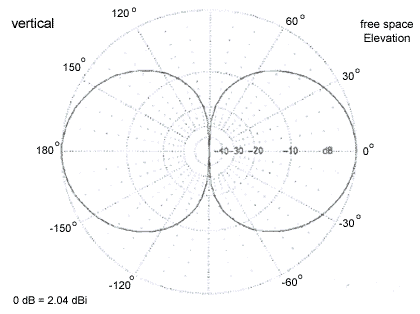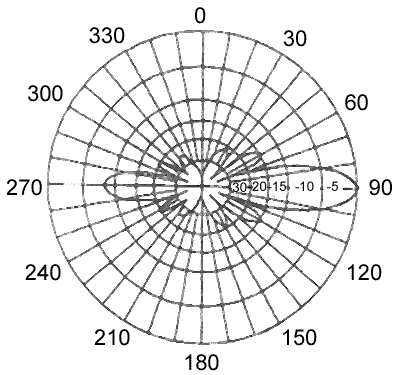| Author |
Message |
    
Jameslarson
Intermediate Member
Username: Jameslarson
Post Number: 156
Registered: 4-2006

| | Posted on Thursday, May 25, 2006 - 10:50 pm: | 


|
Why have the manufacturers simply made a full wave antenna yet? We're almost there with the IMAX. Surely another 12 feet would be no big deal. four 9 foot sections. Or has their been a full wave antenna but not succesful>? Thanks. |
    
Rldrake
Intermediate Member
Username: Rldrake
Post Number: 149
Registered: 1-2006
| | Posted on Friday, May 26, 2006 - 2:24 am: | 


|
Probably not being manufactured by anyone because they figure there aren't enough people around that would spend their money on such a poor performing antenna. |
    
Bruce
Senior Member
Username: Bruce
Post Number: 3878
Registered: 9-2003
| | Posted on Friday, May 26, 2006 - 4:29 am: | 


|
a full wave does not work well |
    
Jameslarson
Intermediate Member
Username: Jameslarson
Post Number: 157
Registered: 4-2006

| | Posted on Friday, May 26, 2006 - 9:52 am: | 


|
Why would it perform poor? I thought that when compromising heght, that you compromise performance. |
    
Road_warrior
Senior Member
Username: Road_warrior
Post Number: 1529
Registered: 7-2004
| | Posted on Friday, May 26, 2006 - 10:32 am: | 


|
Any antenna over 23-24ft in length will
start to lose gain on 27 mhz.
Your strongest antennas are the 5/8 wave and
.64 wave.
The higher you mount these antennas, the lower
the angle of radiation becomes. Which is important
for local and long distance DX conditions.
 |
    
Bruce
Senior Member
Username: Bruce
Post Number: 3880
Registered: 9-2003
| | Posted on Friday, May 26, 2006 - 10:43 am: | 


|
this is what the pattern of a 1/2 wave antenna looks like
 |
    
Bruce
Senior Member
Username: Bruce
Post Number: 3880
Registered: 9-2003
| | Posted on Friday, May 26, 2006 - 10:45 am: | 


|
here is a gain antenna about 9 db
 |
    
Bruce
Senior Member
Username: Bruce
Post Number: 3880
Registered: 9-2003
| | Posted on Friday, May 26, 2006 - 11:12 am: | 


|
Looking at the antenna paterns starting with the 1/2 wave it is a clean 90 deg wide donut shaped one with no side lobes.
As gain increases the main lobe gets narrower and the side lobes increase NOW USING ONE ELM 5/8 WAVE IS THE BEST YOU CAN DO .... anything longer just increases the minor( side lobes ) and this power is SUBTRACTED from the main one the one the other stations will see.
To get gain you must use stacked elms ( or phased ) and this is done all the time at VHF ? UHF sometimes phasing 16 on top of each other for gains of up to 15 DB!
You get gain by compressing the main lobe the narrower it gets the more gain .... example to get 9 dbd you need to get it down to about 9deg if the antenna is vertical and omidirectional |
    
Rldrake
Intermediate Member
Username: Rldrake
Post Number: 150
Registered: 1-2006
| | Posted on Friday, May 26, 2006 - 11:44 am: | 


|
Severe, extremely high, impedance mismatch and a very unuseful radiation pattern for starters. |
    
Hollowpoint445
Senior Member
Username: Hollowpoint445
Post Number: 1241
Registered: 6-2004
| | Posted on Friday, May 26, 2006 - 12:15 pm: | 


|
Because the highest gain you can get from a single element antenna is with a .64 wave.
Antennas longer than .64 wave have multiple lobes that don't concentrate the radiation in a single lobe like the .64 wave antenna does.
You compromise performance with electrically shortened antennas because the length is needed to produce gain. |
    
Ferd1605
Junior Member
Username: Ferd1605
Post Number: 14
Registered: 1-2005
| | Posted on Saturday, May 27, 2006 - 2:05 am: | 


|
Very good you all did explaining eveything ... but there is one fullwave antenna that works , and works better with a reflector and one or more directors .. the quad loop . Problem with a single loop is bi-directional ... Humm , come to think bout it , can someone run a single loop on a antenna desighn program and let me know the patterns ? i never really though much about loops unless i was building a quad for VHF or UHF . |
    
Tech237
Moderator
Username: Tech237
Post Number: 358
Registered: 4-2004
| | Posted on Friday, June 02, 2006 - 11:49 pm: | 


|
If you want a fullwave lenght antenna, you need to lok at such things as loops, and longwire antennas |
    
Marconi
Advanced Member
Username: Marconi
Post Number: 663
Registered: 11-2001

| | Posted on Saturday, June 03, 2006 - 9:08 am: | 


|
Ferd1605, the single quad loop will produce a similar bi-directional pattern similar to a 1/2 wave dipole at the same height. In fact a quad may be a full wave of wire, but when a current or voltage fed quad radiates; electrically the full wave wire collapses on itself and responds very similar to a folded dipole. So, effectively it is a 1/2 wave element and the big difference may only be the feed point impedance between the 1/2 wave dipole and the full wave quad. |
    
Wheelco505
Member
Username: Wheelco505
Post Number: 66
Registered: 12-2004
| | Posted on Tuesday, June 06, 2006 - 1:01 pm: | 


|
marconi is right,and to add to what bruce said,they call it "the flating out effect" right bruce??? |



